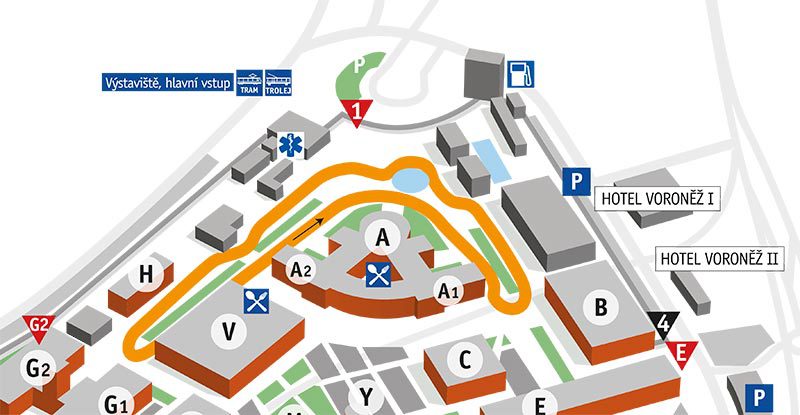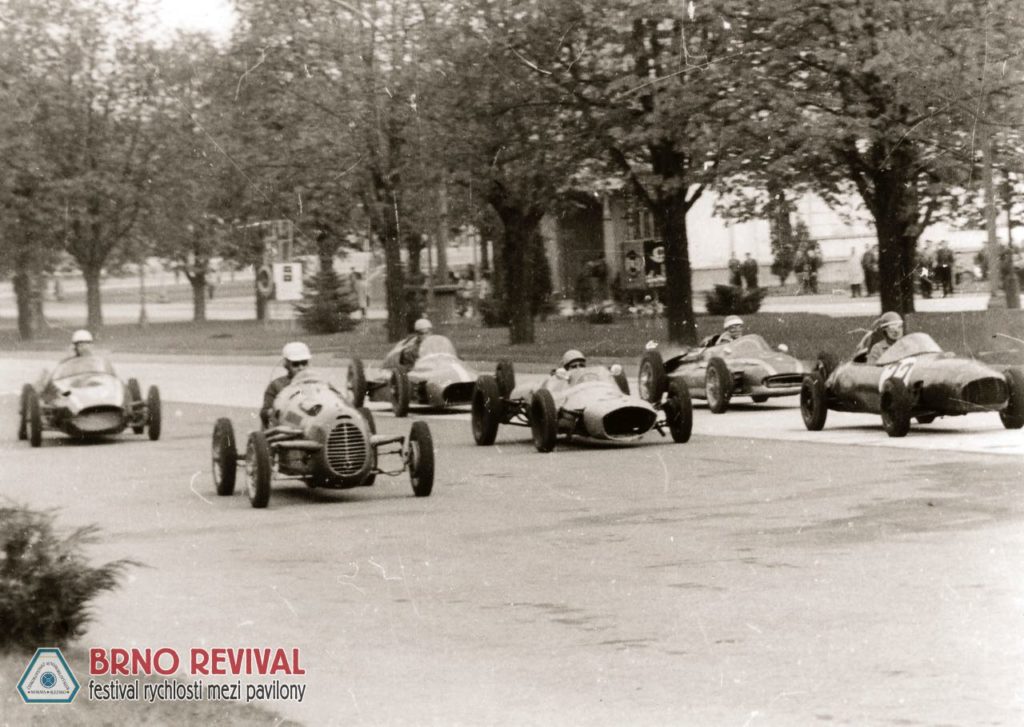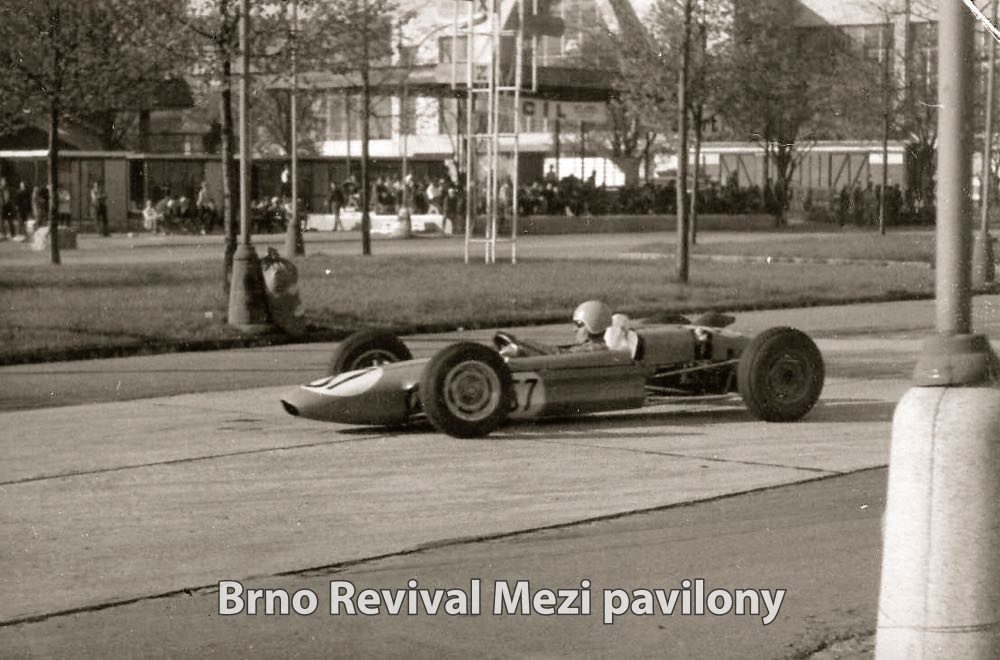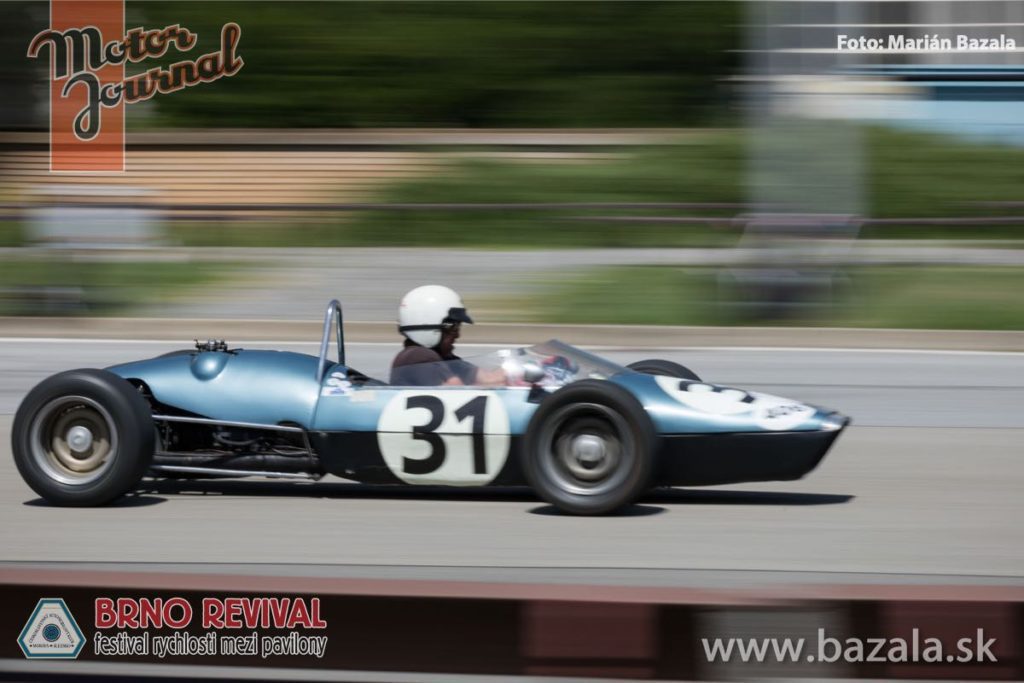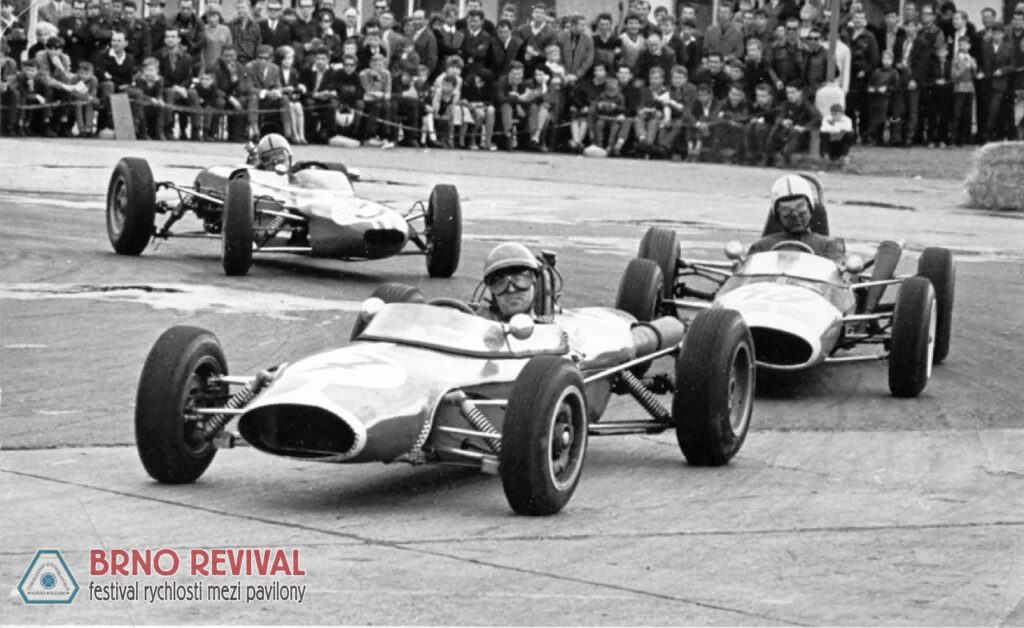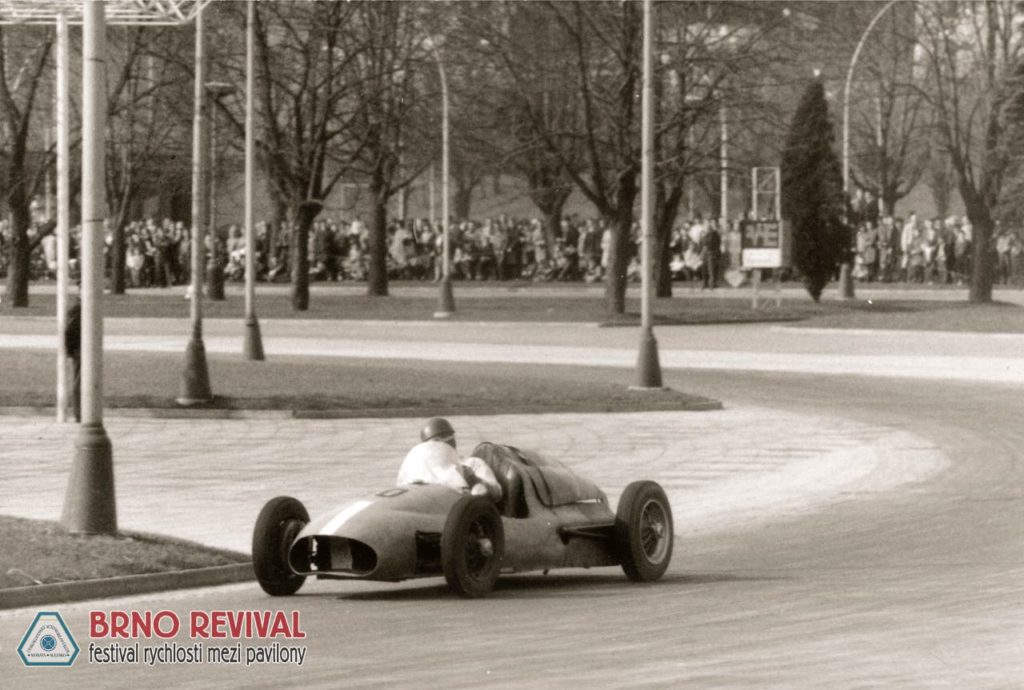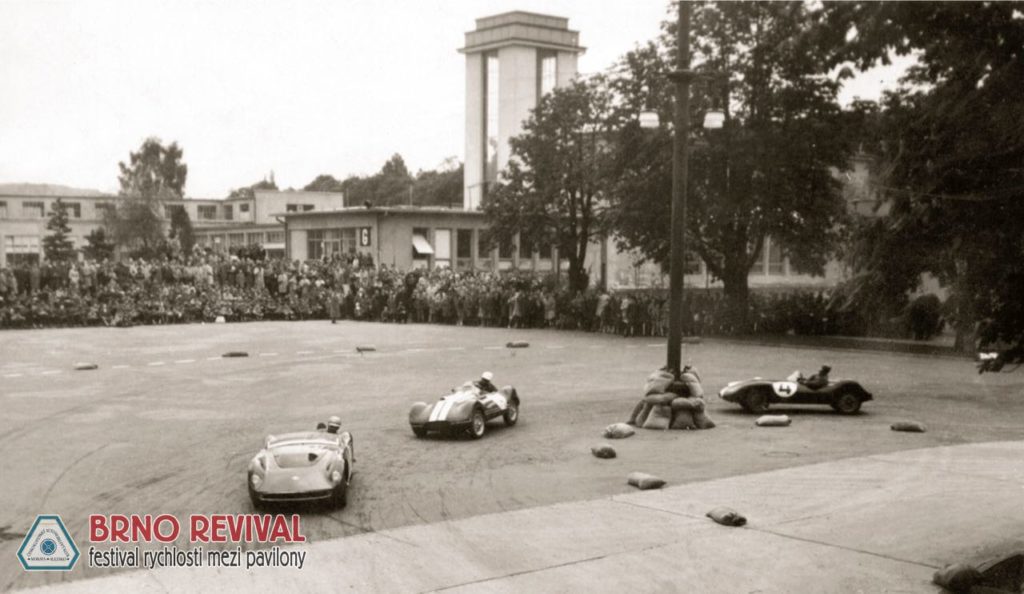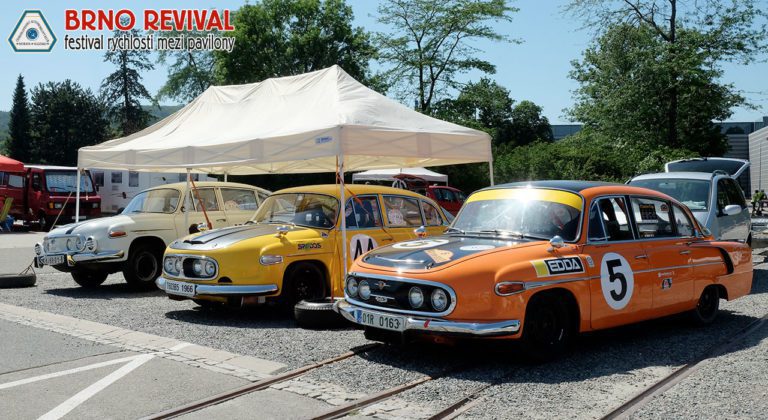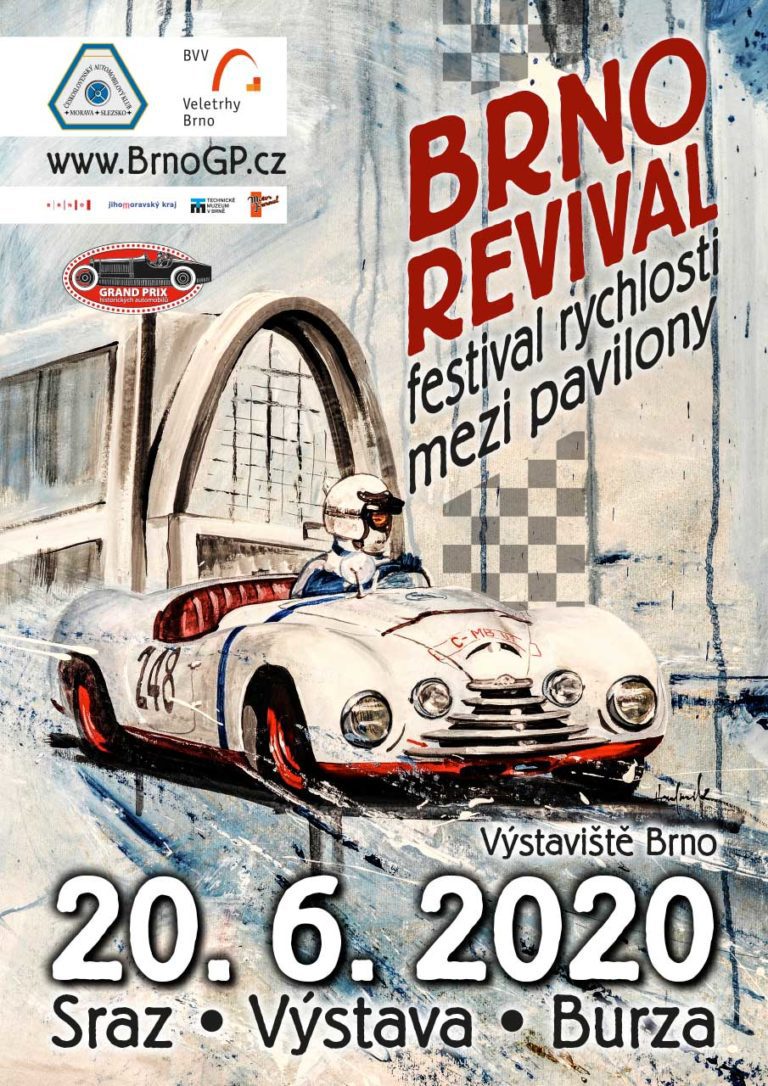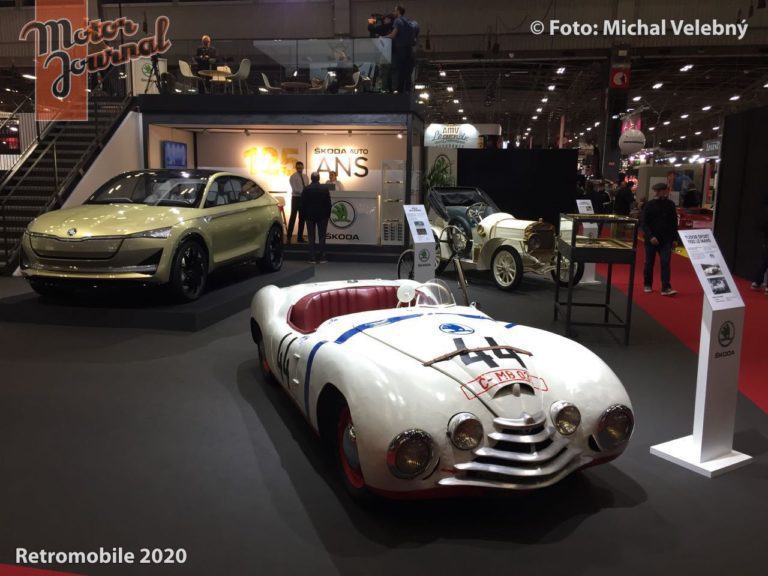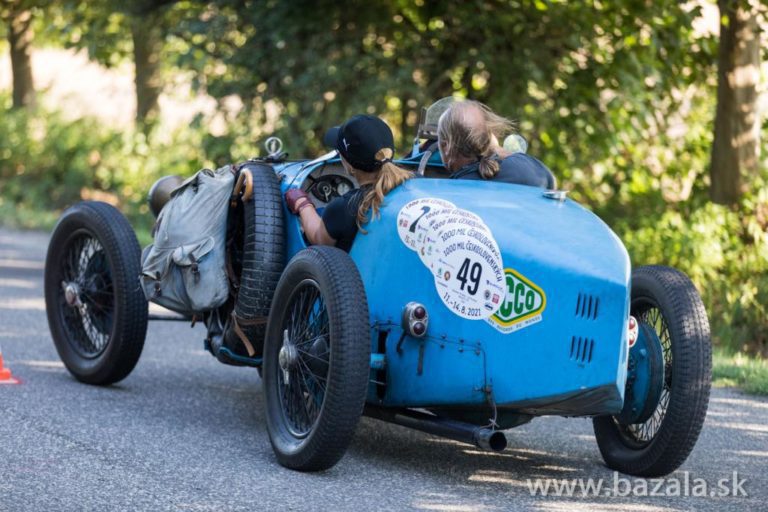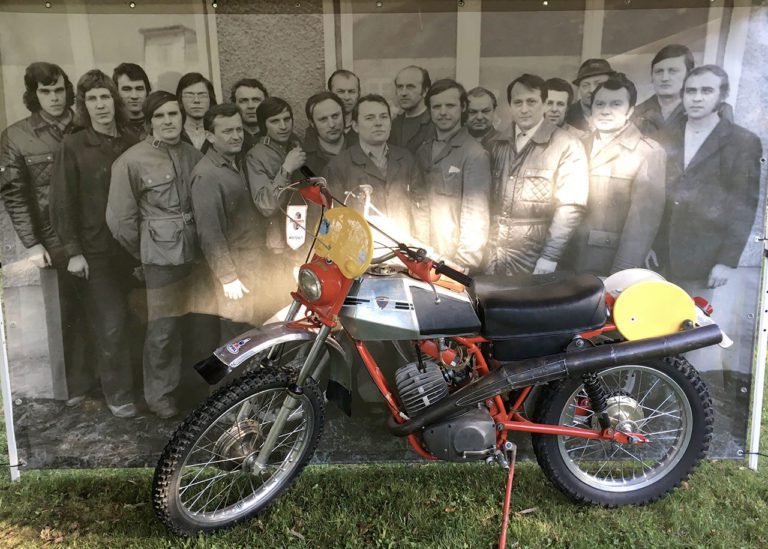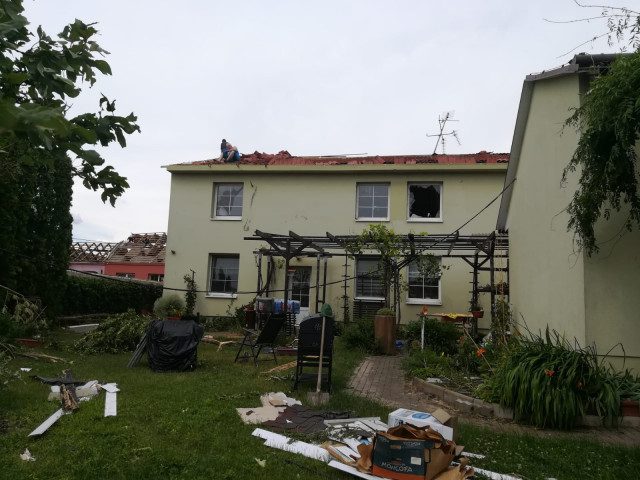Circuit map
In the late 1950s and especially in the 1960s, car, formula car and motorcycle races were held almost regularly inside the fairgrounds. They were organized by AMK Svazarmu Královodvorská strojírny and ZO Svazarmu BVV. The competition of the South Moravian Region took place on a simple track, approx. 1700 m long, right behind the main gate to the area. The circuit "Between the pavilions" had the shape of the letter V, four turns and four straights. The longest was 450 meters, the average width of the circuit was 8 meters, in the corners 24 meters. The uniform concrete surface of the road was bordered along its entire length and on both sides by a several-meter concrete edge at the level of the road. The capacity of the track was 16 for motorcycles, 12 for cars.
The Brno Revival in 2017 was driven along the original track, which was slang called a roll. The entrance to the area will be through the main gate (1) or through pavilion E. A depot will be built on the free area A and an exhibition of sports vehicles will take place in pavilion A. Nine categories of cars and seven categories of motorcycles will compete.
Something about the circuit from Jan Husták's story
From Albert Salický's article The nice guy in the back: Jan Husták (1927–2007), Motor Journal 2008/07
Years go by, enthusiasts around Motor Journal write articles and reminisce. To the flying waiter Gbelka, to Hubáček, later completely invincible thanks to the divine Lotus, to the mysterious architect Valenta, for whom my grandfather sharpened the crankshafts in the ČSAO on his Cisitalia and later Felicia (it had a revolutionary design, white on the red hood, red stripe on the white roof , something unheard of at the time), through engineer Kroup, successfully whipping a serial Wartburg, a predatory Wolf with an additional reflector on the roof of the octave, to a forgotten enthusiast who squeezed the last horses from a Renault 4CV at the end of the field. Or Frant Šťastný, who came to Brno to check the folds of the NSU Sport Prinz miniature coupe.
The races at the fairgrounds were charming, not only thanks to the opposite lock riding style, i.e. skidding with the steering wheel turned in the opposite direction to the stop, as it was the only way to quickly pass the corner at the entrance, paved – still today – with small granite blocks, but also thanks to the diligent organizers who during the breaks between the races, they collected the torn cubes and returned them to the paving with the help of hammers and wooden wedges. And in general, seeing Brunclík from Vrchlabí with the same Škoda 1202 in the opposite lock was something. Where are today's travelers digging?
However, our hero was Jan Husták. How his car got into the Formula Junior grid is a complete mystery, but he was there. Although the machine had an engine in the back, it otherwise looked more like the 1950s. As far as I remember, it was dark blue, that is, where the color had not yet faded, the driver sat upright in it, controlled it with a large steering wheel, and patiently followed the much faster single-seaters with increasing distance. However - and this is important - the Juniors of the time, mostly driven by warty Wartburgs, emitted a disgusting roar and whine, while Husták's unique special drove quietly, refinedly, turned its 4500 revolutions at ease and was simply to be eaten, just like its pilot, calmly sitting in an archaic cockpit.


